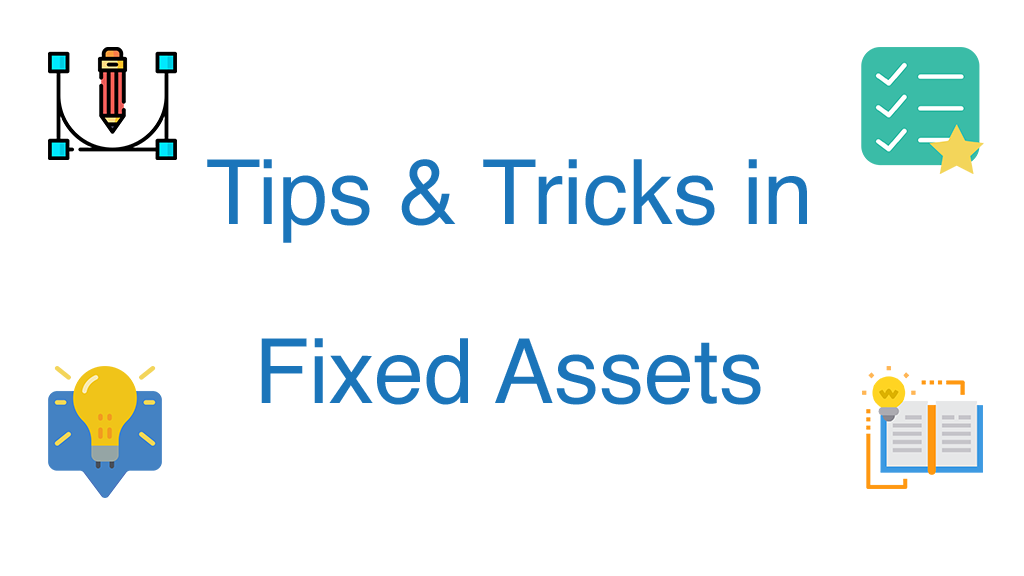
Don’t create a lot of asset classifications. For example, a ‘vehicle’ classification can contain cars, pickup trucks, buses and so on. Having a lot of classifications means that eventually, an asset might fall in two or more categories making your life harder. Also, having a long list of asset categories takes a lot of time to manage.
Try to keep the capitalization limit above the cost of laptops as tracking them is always a hassle. Also have a policy to give the laptops to your employees after the end of their lifetime value.
Maintenance and Accounting records should be kept separate. Don’t mix maintenance information with financial records as it tends to become confusing.
Try not to record assets with a lifetime value of less than 1 year. The hassle in managing these items outweighs the benefits of keeping the record.
In financing your fixed asset purchases, try not to capitalize minor interest amounts. The documentation will take a lot of time and if auditors investigate these amounts, you may have to pay higher audit fees.
If there are any retirement obligations for your fixed assets, then record them as an expense and don’t capitalize it.
Try to group assets in classes, then apply depreciation to the asset class instead of each individual asset.
If the salvage value is very low, it takes less work just to consider the salvage value zero and depreciate accordingly.
Whenever possible, try to use the straight-line depreciation method. External auditors can easily verify your records, and this can significantly reduce auditing fees.
If asset components have different lifetimes, try to record and depreciate them separately so not to record sudden high losses when components are replaced.
If an asset’s fair value is less than the cost to sell and the asset is higher than the carrying amount, then there is no impairment and there is no need to record this as part of an impairment test.
In impairment, try to use shortcuts when calculating asset value (i.e. estimates and averages). Calculating the fair market value or discounted cash flow of an asset is always more complex and time consuming.
Steady and declining growth rate is usually used in projections. As the company successfully grows, it attracts more competitors that will eventually decrease the growth rate. If you’re using increasing growth projections, you must back it up with strong evidence.
Held-for-Sale classification for fixed assets always requires additional work to record and maintain. Try to raise the capitalization limit to record low value assets intended for sale as an expense. For high value assets, it’s always better to depreciate the asset till time of sale than to classify it as Held-for-Sale.
Try to minimize reclassifying assets in prior periods. The accounting burden is significant.
Raise the capitalization limit above the cost of replacement parts. It will be a hassle to record and then dispose of these items whenever there is a replacement if the limit is too low.
If an asset is Held-for-Sale, then assets and liabilities related to assets have to be presented separately.
Minimize record keeping costs by increasing the capitalization limit but of course you’ll be accelerating the recognition of expenses.
Don’t create an account that doesn’t contain an asset. You can do that whenever an asset needs to be recorded under that account.
Use a single accumulated depreciation account. It will be confusing for you, your team and external auditors.
It will take a long time for auditors to check every single asset. Therefore, auditors should focus on the 10% of assets that make up the 80% cost of all assets with random spot checks.
Impairment review cost can sky rocket. Auditors should focus on the most expensive assets. The cut-off can be much higher than the capitalization value.
Use internal appraisals to revalue your assets. External appraisers are expensive and will not add a significant value to your bottom line.
Barcode tag reading requires line of sight. So, try to fix it in an easily accessible location.
RFID solves the line of sight issue. It’s the recommended method for tracking and counting assets quickly and reliably.
Always use the standard useful life and depreciation method of your fixed assets. Auditors will question your judgement if you deviate from the norm.
Always get a written report from a third-party appraiser and use it as the basis for your asset revaluation. Auditors consider this as strong evidence.
Reconcile your assets regularly. Waiting till year end will significantly burden you and you’ll have a mess to clean up.
Auditors usually review your asset purchases. Therefore, supplier records should be maintained either in binders or in an asset management software.
If there are many fixed asset transactions not recorded with an upcoming year end audit. Try to reconcile your asset register accurately till the previous month and then roll forward for the current month that the audit is scheduled to take place.